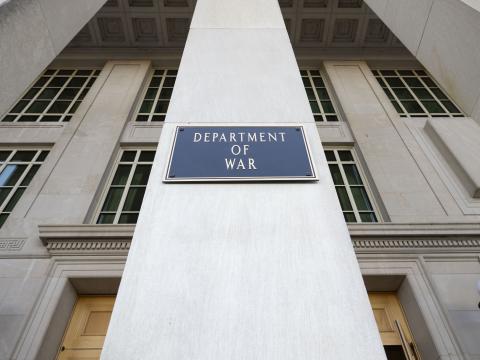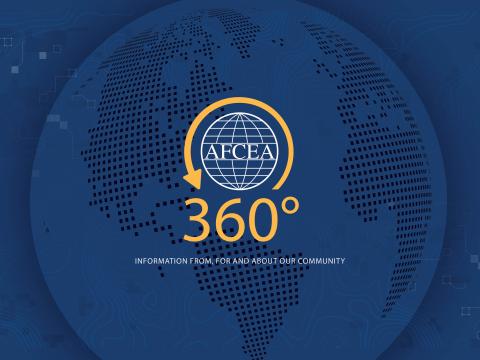Virtual Exposition Crosses International Borders
Speakers in five Baltic countries recently used cyberspace to address security, global cooperation in the face of crisis, education challenges and the expanding use of technology. More than 40 presentations composed the first-of-its-kind online international conference and exhibition. TechNet Baltic 2001, organized by the AFCEA Stockholm, Oslo and Helsinki chapters and the Visby Telemedicine subchapter, took place September 24 through 28. The event was hosted by Finland, Lithuania, Norway, Russia and Sweden and featured a virtual exhibition where participants from anywhere in the world could view exhibitors’ products and services.
Stockholm Chapter President Maj. Gen. Göran De Geer, RSA (Ret.), in his remarks at the opening address referred to TechNet Baltic as a conference “without the trouble of arranging hotel accommodations or travel.” He noted that because of recent terrorist attacks on the United States, people should expect changes in the way people travel and meet in large numbers.
Calling in from the United States, Lt. Gen. C. Norman Wood, USAF (Ret.), past AFCEA president and chief executive officer, also spoke at the opening session and quipped that this conference was the first he had attended in his pajamas. He stressed that the event was groundbreaking and extremely relevant as worldwide cooperation becomes increasingly important.
Following the address, 11 presenters focused on crisis management and command and control systems in the service of society. Per-Åke Nilsson, technical adviser for command and control systems, SWEDET, National Board of Health and Welfare, Sweden, emphasized that preparedness for crisis means being ready to deal with incidents outside of what is normal. It comprises planning, implementation and evaluation—before, during and after an event. “Even in peacetime, health and medical resources are often extended to full capacity,” he contended. “The need for coordination is great, and for cooperation to be possible, an effective management system is required and optimal use of resources is necessary.” He also stressed that technology must be well defined before it is employed.
Dr. Dinas Vaitkaitis, director, Crises Research Center, Department of Disaster Medicine, Kaunas University of Medicine, Lithuania, emphasized that on September 11, three people pushed one button—an information technology (IT) services button. The three entities—fire and rescue services, police and ambulance/hospital services—all are responsible for crisis planning, assistance and cooperation. And they are all IT customers of radio communications, telephone services, global systems for mobile communications, general packet radio service and global positioning system. Vaitkaitis said that when systems are created, developers must ask if the system will be adequate for multiple clients with different needs but the same mission. He also questioned whether most information systems can cross the language barrier.
Concluding day one, Maj. Mats Persson, RSA, joined conference participants online from the Command, Control, Cooperation and Collaboration Laboratory at the Swedish National Defense College. The laboratory creates virtual environments to facilitate solid decision making by conducting tests followed by evaluations of command and control processes. The exercise in progress involved the police, rescue services, medical services and the armed forces who collaborated as a joint staff to solve a problem, extinguishing a forest fire. They used an application known as Microworld to simulate the event and analyze the decisions made during the scenario.
TechNet Baltic’s topic for the second day was distance education and e-learning. More than 22 lecturers presented their views and discussed their countries’ experiences and projects in progress. The president of the Republic of Lithuania, Valdas Adamkus, started the day’s discussions. “We have left the 20th century of industrial development and entered the 21st century, which has been labeled the era of state-of-the-art information technology and evolving knowledge,” he said, noting that these two labels do not fully reflect the substance of a modern society. “We are a learning society. Only continuous learning can guarantee development and progress of the individual or an institution or the state of economic independence, competitiveness, justice, democracy and well-being. Learning is key. It cannot be limited to a single educational institution or a certain time in life. Life and learning are intertwined.”
Ramutis Bansevicuius, rector of the Kaunas University of Technology, remarked that students are being prepared for a global knowledge-based economy in which ideas will be the basic currency. He noted that experts estimate that in the next 50 to 100 years, the world’s population may climb to 8 to 12 billion people. Bansevicuius explained that worldwide knowledge doubled between 1750 and 1900. By 1965, it doubled every five years. By 2020, the totality of knowledge worldwide will double every 75 days. “If higher education is to respond to expansion, universities must change to keep abreast,” he emphasized. Successful universities of the future must provide opportunities wherever the student may be located; they must use methods such as Internet-based learning; and they must apply more actively methods of e-learning in the research and development of new technological systems.
The third day of TechNet Baltic encompassed the theme “Secure Access to Public Services Through the Internet.” Ari Arto Saapunki, chief technology officer, Miotec Oy, Espoo, Finland, gave an overview on the strengths of Europe, which include public key infrastructure, smart cards and biometrics.
Jouni Backman, member, Parliament of Finland, discussed politics and society and how they relate to technology. “Up to now, the development of an information society has focused too much on technology,” he attests. “It is necessary for us to change our way of thinking to make our information society process-led.” Backman said that old operating models from industrial society must be changed to respond to changing needs, challenges and opportunities. Society is moving to a network-centric model based on interaction, but political decision-making systems and administration still operate on the basis of an industrial society’s needs and operating models. “We need global cooperation in the face of consumer protection, the fight against fraud, information security, privacy, intellectual property rights and taxation,” he said. “The global nature and rapid development of networks and services make traditional law-making practices look slower than ever.”
Additionally, Backman pointed out that the potential for new communications and information technologies is far from being explored fully in the political arena. A more effective use of the potential is dependent on the development of granting universal access to the technologies. The democratic and educational aspects of technology are gaining importance, he said.
On the fourth day of the conference, experts talked about the future of information technology and telecommunications as well as the expanding use of telemedicine. Dr. Björn-Erik Erlandsson, professor and director, Department of Biomedical Engineering, Uppsala University Hospital, Sweden, discussed a new health care network proposal in Sweden called SJUNet (pronounced show-net), a broadband network that enables video communication. “We need distributed health care across great distances. Information should follow the patient, not the other way around,” he stated. The implementation of the network could lead to diminished lead time whenever a patient is moved from one hospital to another. In addition, the network would include pharmacies, local government, citizens and health care entities. SJUNet services encompass e-mail; videoconferencing; the capability to transfer large files containing information such as X-rays, ultrasounds and electroencephalograms; and applications for transactions such as referrals.
The final day of the virtual event began with remarks on changing defense scenarios related to shrinking budgets, new concepts and technological change. Dr. Ragnavald H. Solstrand, director of research, Norwegian Defense Research Establishment, focused on the relationship among technology, defense and security.
“In this post-modern society, we are used to technology that pervades everyday life, especially in communications and computer technologies,” Solstrand said. “These are marked by a high rate of change, and we must look at the long-term impacts, which are dramatic. The technology development we’ve seen over the last 30 years changed the ground rules of warfare more than the sum of all changes over the last two to three centuries.”
He also pointed out that there are unprecedented opportunities for military; but, high-speed technological developments have side effects that must be dealt with before they become insurmountable. The first is the technology-driven cost of equipment and its effects on defense procurement. Consequently, the quantity of military forces has been reduced in many countries. He added that the rate of technology implementation differs widely among nations, especially within NATO, and this affects interoperability.
“From the Balkan conflicts, we’ve learned many lessons,” he cited. “Future international crisis-response operations will have to be multinational.” He asserted that a factor that could weaken the link between technology development and security is symmetry. “We should expect enemies to take the fight to another arena where they are better prepared and where our own technologically advanced forces cannot exploit their full potential. There is a risk that western nations will focus too one-sidedly on military security in the traditional sense. We must work to fill the gaps.”




Comments